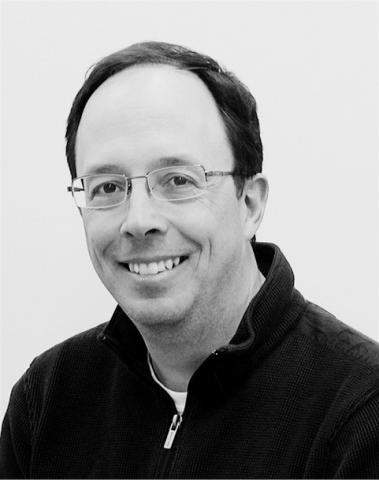
Pierre Savard, Professor of Physics at the University of Toronto and TRIUMF Scientist, has been appointed the next Physics Coordinator of the ATLAS experiment at CERN’s Large Hadron Collider (LHC). Savard previously led the ATLAS Higgs boson group from 2012 to 2013, and the Exotic Physics group from 2008 to 2010. Savard will assume deputy responsibilities for the role under current Physics Coordinator Dr. Dan Tovey for the remainder of 2017 and will complete the transition to Physics Coordinator in 2018.
The ATLAS experiment is a collaborative, multinational endeavour involving over 3000 scientists who study the results of particle collisions in search of new discoveries and a more complete understanding of our universe. We sat down with Savard to discuss his new role within ATLAS and what we can expect in the months and years ahead.
TRIUMF: Can you tell us a little bit about what the position of Physics Coordinator entails?
Pierre Savard (PS): Put simply: the Physics Coordinator organizes activities for the various groups working in collaboration within the ATLAS experiment.
ATLAS has about nine physics groups and six or seven performance groups. Right now, we are in the process of analyzing the massive amounts of data that we collected over the course of 2016- terabytes and terabytes of data. In tandem with this analysis, we’re also working on recalibrating various parts of the detector itself to make our data-taking in 2017 and beyond more efficient and effective.
As you can imagine, organizing all of the different groups that work at ATLAS is no small task. Producing clean and processed data and completing a schedule of complex, minute calibrations takes a lot of communication and organization. We want to show the world what happened in 2016 at ATLAS, and the Physics Coordinator plays a significant role in orchestrating all of the different sections.
TRIUMF: Has your research always been with ATLAS?
PS: The first time I worked on anything relevant to high-energy physics was with the OPAL experiment at CERN. I then did a Master’s degree centred on a big particle collider that never ended up being built, the Superconducting Supercollider in Texas. After that fell through, I joined the team of TRIUMF physicists who were building the ATLAS calorimeter that is now in place over at CERN in Switzerland. I then moved to Fermilab where I worked on the Collider Detector at Fermilab (CDF) experiment for about ten years. I returned to the ATLAS experiment in about 2006 or 2007.
TRIUMF: Has all of your research focused on the same area of particle physics?
PS: I’ve worked on a lot of different experiments, and on each, I’ve focused on different things. In the last five or six years, I’ve been concentrating primarily on Higgs physics, as I was in charge of the Higgs group for a couple of years. Before that, I headed the team at LHC investigating physics beyond the Standard Model.
TRIUMF: One of the major findings of the ATLAS experiment was the discovery of the Higgs boson in 2013. What is the next big thing ATLAS will focus on?
PS: When the ATLAS experiment was first designed and built, there was this understanding that we would use it to find something significant. Either we would discover the Higgs boson, or we would discover something that replaced it and could reconcile our theories mathematically. As it turns out, we found the Higgs boson. However, there is still so much out there! We are still very much in ‘search’ mode.
Another responsibility of the ATLAS physics program is to make precision measurements – for example, measuring precisely how something like the Higgs boson decays, and how it is produced. If we find deviations in these precision measurements (compared against what is predicted by the Standard Model), then we can safely say we have found something new. While these discoveries might not necessarily indicate a new particle or a new force, they are still important- we would have found something that is wrong with the Standard Model, which is informative in its own way.
TRIUMF: What are you most excited for in this new role?
PS: As far as I’m concerned, the present is one of the most interesting times to be analyzing data from the Large Hadron Collider (LHC). With recent upgrades, the collider will approach a 13 teraelectronvolt (TeV) collision energy, up from 8 TeV in 2015. That’s 13 trillion electron volts! When we increase the collision energy, the rate at which we produce interesting particles also increases, as does the detector sensitivity for new heavy particles. There’s a lot of potential, now, for new discoveries accompanied by fascinating measurements. For experimental particle physicists, the precision with which we’ll be measuring these collisions is truly beautiful. It's a fascinating time for the LHC, for ATLAS, and for doing physics generally. My new job of Physics Coordinator promises to be both stimulating and challenging at the same time.
Congratulations, Pierre!
You can follow news and results from the ATLAS experiment here, and on Twitter at @ATLASexperiment
